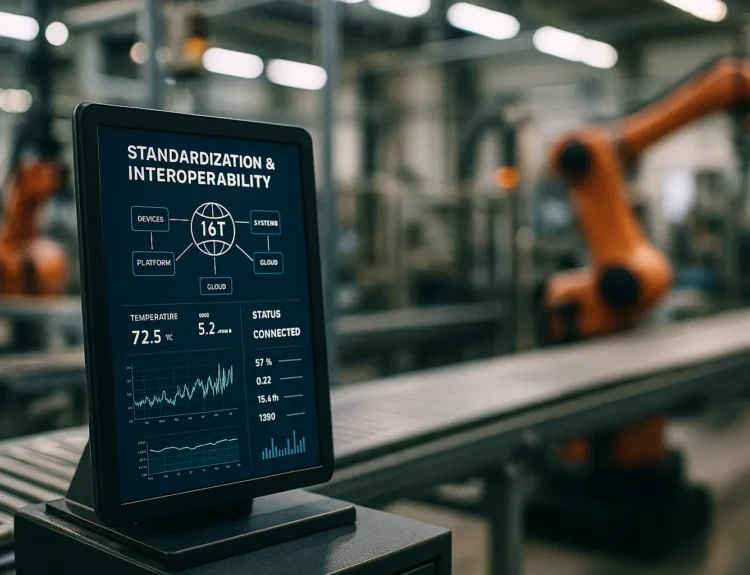In an era where technology’s pace is relentless, the convergence of automation and cybersecurity has become the bedrock of modern systems. As organizations accelerate their digital transformation journeys, the promise of automated tools and processes offers convenience, efficiency, and innovation. However, this also opens a Pandora’s box of potential threats and risks that require keen oversight. We stand at the crossroads of progress and vulnerability, and the decisions we make today in fortifying our cyber defenses will shape the future resilience of our cyber-systems. Let’s delve deeper into why safeguarding these automated landscapes is crucial.
The Confluence of Automation and Security
As technology permeates every corner of our lives, automation has emerged as a game-changer across industries. From streamlining tasks to optimizing resource allocation, automated systems are the backbone of modern organizations. However, as enticing as this progress is, it also introduces new cybersecurity challenges.
Automation’s Dilemma: Imagine a world where machines autonomously handle data, make decisions, and initiate responses. While this reduces our workload, it inherently introduces vulnerabilities. Automated systems, unless meticulously monitored and secured, become potential entry points for malicious threats. Cybersecurity in this landscape is not just a checkbox—it’s a necessity.
Human-Centric Approach: While machines can perform repetitive tasks efficiently, they lack the nuanced understanding of context that humans possess. This makes a human-centric approach to cybersecurity indispensable. We must bridge the gap between automation and human intuition, ensuring that our management teams remain vigilant and proactive against potential threats.
Evolving Threat Landscape: The evolution of technology is paralleled by the sophistication of cyber threats. As we embrace automation, the need for robust security measures grows exponentially. Data breaches, ransomware attacks, and other malicious activities are no longer isolated incidents—they are pervasive challenges that demand our immediate attention. Our response must be swift, informed, and adaptable.
Protecting Automated Systems: Strategies for Resilience
In this digital age, where automation reigns supreme, the integration of cybersecurity strategies is not an option—it’s imperative. Let us explore key strategies to fortify our systems against looming cyber threats.
Proactive Threat Management: A cornerstone of effective cybersecurity is proactive threat management. This involves anticipating threats, identifying potential vulnerabilities, and implementing necessary measures before an attack occurs. By leveraging advanced tools and technologies, organizations can bolster their defenses and ensure that automated systems remain protected.
Compliance and Regulations: Navigating the intricate landscape of compliance is essential in today’s interconnected world. Regulatory frameworks provide a blueprint for organizations to align their security processes with industry standards. By adhering to compliance requirements, we not only protect our data but also ensure the integrity of our cyber ecosystems.
Human and Machine Synergy:
While automation excels in efficiency, the human touch remains irreplaceable in cybersecurity. Teams must work hand in hand with technology, creating a synergy that enhances threat detection and response. By fostering a culture of awareness and continuous learning, we empower our workforce to be vigilant guardians of our digital realms.

The Role of Technology in Risk Mitigation
Cutting-edge technology is at the heart of effective risk management in automated environments. As cyber landscapes become more complex, identifying and mitigating risks requires innovative solutions.
Advanced Threat Detection: Traditional methods of threat detection are no longer sufficient. We must embrace sophisticated technologies that offer real-time insights into potential threats. Machine learning and artificial intelligence are pivotal in analyzing patterns, predicting potential attacks, and enhancing our response capabilities.
Automated Incident Response: When a threat is detected, swift action is crucial to minimize damage. Automated incident response systems are designed to act quickly, reducing the time from detection to mitigation. By automating these processes, we not only save valuable time but also enhance the efficiency of our security measures.
Building Resilience: The objective of any cybersecurity strategy is resilience. By integrating technology with robust security protocols, we create a fortified environment that withstands the test of evolving threats. Our goal is not just to react to incidents but to emerge stronger and more prepared for future challenges.
As we stand on the brink of a new era, the importance of cybersecurity in automation cannot be overstated. It’s a call to arms for organizations, teams, and individuals to prioritize security measures and embrace a mindset of continuous improvement. The journey to secure our systems is ongoing, and our commitment to fortifying our digital landscapes is unwavering.
Together, let us champion the cause of safe automation, ensuring that the promise of technology is met with vigilance, adaptability, and resilience. The future is automated, but with the right cybersecurity measures, it will also be secure.
FAQ
What is the role of cybersecurity in automation?
Cybersecurity in automation is crucial for safeguarding systems, networks, and data from unauthorized access and cyber threats. As automation relies heavily on interconnected systems and data exchange, ensuring these processes are secure is vital to maintain operational integrity and protect sensitive information.
How does automation increase cybersecurity risks?
Automation often involves interconnected devices and systems, which can create multiple entry points for cyber attackers. If not properly secured, these entry points can be exploited, leading to potential data breaches, system disruptions, and unauthorized access to critical infrastructure.
What are some common cybersecurity threats faced by automated systems?
Automated systems can face various threats, including malware attacks, ransomware, phishing, and unauthorized access. These threats can disrupt automation processes, lead to data theft, and compromise system integrity.
How can organizations enhance cybersecurity in automated environments?
Organizations can improve cybersecurity in automated environments by implementing robust security protocols, conducting regular security audits, using encryption, updating software and systems frequently, and training employees on cybersecurity best practices.
Why is it important to integrate cybersecurity from the start in automated systems?
Integrating cybersecurity from the onset of automation ensures that security measures are built into the system’s architecture, reducing vulnerabilities. This proactive approach helps in preventing potential threats and mitigating risks, thereby safeguarding the automated processes and data from cyber threats.



